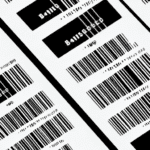Understanding the Commerce Control List (CCL) and Its Impact on Supply Chain Management
The Commerce Control List (CCL) is a pivotal element of export control regulations in the United States, overseen by the Bureau of Industry and Security (BIS). The CCL enumerates items, technologies, and software that necessitate a license for export, ensuring that sensitive materials do not fall into the wrong hands.
Businesses engaged with sensitive technologies or items with potential military applications must adhere to the CCL. The BIS regularly updates the CCL, adding or removing items based on technological advancements and evolving security threats.
What is the Commerce Control List (CCL) and Why Does It Matter?
The CCL is an exhaustive document detailing items, technologies, and software requiring export approval from the U.S. The BIS regulates these exports to safeguard national security and foreign policy interests. Understanding the CCL is crucial for businesses to navigate export restrictions and maintain compliance with export regulations.
Regular updates to the CCL reflect shifts in technology and global security dynamics. Non-compliance can lead to hefty fines, legal repercussions, and damage to a company's reputation.
Beyond the CCL, businesses must also consider other regulations like the International Traffic in Arms Regulations (ITAR) and the Export Administration Regulations (EAR), depending on the nature of the exported goods. Consulting with legal experts is advisable to ensure comprehensive compliance.
The History and Evolution of the Commerce Control List (CCL)
Since its inception, the CCL has undergone multiple revisions to align with international agreements and technological progress. In the early 1990s, it was restructured to comply with the Wassenaar Arrangement, a multilateral export control regime.
The 2013 Export Control Reform (ECR) initiative marked a significant overhaul, transferring certain items from the State Department to the Commerce Department's jurisdiction. This shift enhanced the efficiency and transparency of export control processes.
Ongoing efforts aim to harmonize the CCL with global export control standards, promoting international security and preventing the proliferation of weapons of mass destruction. Increased international cooperation has streamlined compliance for businesses operating across multiple jurisdictions.
Key Components of the Commerce Control List (CCL) and Classification
The CCL is categorized into ten sections, each addressing different types of items, technologies, and software. These categories are further subdivided into five classifications based on control levels and associated risks.
- Nuclear Materials, Facilities, and Equipment: Includes nuclear reactors and related materials.
- Chemicals: Covers toxic chemicals and precursors used in chemical weapons.
- Electronics: Encompasses computers, telecommunications equipment, and encryption software.
- Lasers and Sensors: Pertains to laser range finders and night vision devices.
- Aerospace and Propulsion: Includes aircraft engines and rocket systems.
- Materials: Covers advanced materials like metals, ceramics, and polymers.
- Marine: Pertains to maritime technologies and equipment.
- Transportation: Includes automotive and transportation-related technologies.
- Fiber-Optic Communications: Covers fiber-optic technologies and components.
- Information Security: Encompasses cybersecurity tools and information security technologies.
Understanding the Impact of CCL on Supply Chain Management
The CCL significantly influences supply chain management, requiring businesses to navigate complex compliance landscapes when exporting sensitive items. Compliance efforts can affect both the timeline and costs of supply chain operations.
Non-compliance with CCL regulations can lead to severe penalties, including substantial fines and legal actions, which can tarnish a company's reputation and erode trust with customers and partners.
Maintaining up-to-date compliance necessitates continuous monitoring of CCL updates and integrating compliance checks into supply chain processes.
How CCL Affects Export Controls and Regulations
The CCL is integral to the framework of export controls and regulations, ensuring that sensitive items are not misused. It establishes a standardized classification system, simplifying the identification of restricted items and facilitating regulatory compliance.
By controlling the export of critical technologies and materials, the CCL upholds national security interests and prevents adversaries from acquiring technologies that could be detrimental to the United States and its allies.
For more detailed information, refer to the BIS CCL Classification.
Navigating the Complexities of CCL Compliance
Achieving compliance with the CCL is challenging, especially for businesses dealing with a diverse array of products and technologies. Key steps include:
- Staying informed about CCL updates and regulatory changes.
- Implementing robust internal compliance programs.
- Obtaining necessary export licenses before shipping items.
Remaining current with CCL modifications is critical, as the list is frequently updated to account for new technologies and shifting security landscapes.
Understanding the specific requirements for each CCL category ensures that businesses accurately classify their products and adhere to the relevant export controls.
Common Challenges Faced by Businesses in Managing CCL Requirements
Businesses must navigate several hurdles to comply with the CCL, including:
- Regulatory Complexity: The intricate and detailed nature of CCL regulations can be difficult to interpret and apply.
- License Acquisition: Securing the necessary export licenses can be time-consuming and resource-intensive.
- Compliance Costs: Implementing and maintaining compliance systems incurs significant expenses.
- System Integration: Integrating compliance checks into existing supply chain systems often requires substantial adjustments.
Frequent CCL updates necessitate robust monitoring systems to ensure ongoing compliance and avoid inadvertent violations.
Best Practices for Effective CCL Compliance in Supply Chain Management
To achieve effective CCL compliance, businesses should adopt the following best practices:
- Establish a Comprehensive Compliance Program: Incorporate regular training, internal controls, and auditing processes.
- Collaborate with Suppliers: Ensure that all supply chain partners adhere to CCL requirements.
- Continuous Monitoring: Regularly review and update compliance procedures in line with CCL changes.
- Leverage Expertise: Consult with legal and regulatory experts to navigate complex compliance landscapes.
Staying informed through government publications and industry seminars can help businesses anticipate and adapt to regulatory changes promptly.
How Technology is Helping Businesses Manage CCL Requirements
Advancements in technology have streamlined CCL compliance, offering tools that enhance efficiency and accuracy:
- Automated Compliance Systems: These systems can monitor exports in real-time, ensuring adherence to CCL regulations.
- Data Analytics: Advanced analytics provide insights into compliance trends and potential risk areas.
- Integrated Software Solutions: Software platforms that integrate compliance checks into supply chain management facilitate seamless operations.
Real-time reporting enables businesses to identify and address compliance issues proactively, reducing the risk of violations and associated penalties.
For more information on compliance technologies, visit ShipScience Compliance Solutions.
The Future of CCL and Its Potential Impact on Global Trade
The CCL is expected to evolve in response to technological innovations and shifting global security priorities. Anticipated changes include:
- Expansion of controlled items to include emerging technologies such as artificial intelligence and quantum computing.
- Enhanced collaboration with international export control regimes to promote global security standards.
- Increased emphasis on cybersecurity and information security controls.
These developments may increase the complexity of compliance for businesses, particularly those operating internationally. Companies will need to stay agile and adapt their compliance strategies to navigate the evolving regulatory landscape.
Case Studies: Real-World Examples of Companies Managing the Commerce Control List (CCL) Effectively
Several corporations have exemplified effective CCL compliance:
Honeywell
Honeywell has implemented a robust internal control program encompassing comprehensive training, continuous compliance monitoring, and regular audits. This proactive approach has streamlined their compliance activities, minimized the risk of non-compliance, and ensured adherence to the latest CCL regulations.
Boeing
As a leader in the aerospace industry, Boeing has developed an extensive compliance framework that includes regular employee training, meticulous record-keeping, and a dedicated compliance team. This strategy has enabled Boeing to avoid significant penalties and maintain its reputation as a reliable global supplier.
These examples underscore the importance of a structured and proactive approach to CCL compliance. By prioritizing compliance, businesses can mitigate risks, avoid legal repercussions, and sustain strong relationships with partners and customers.






















